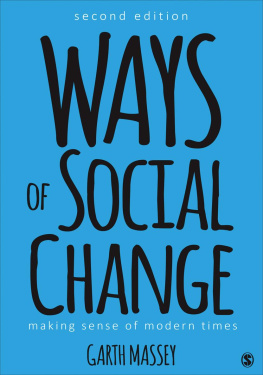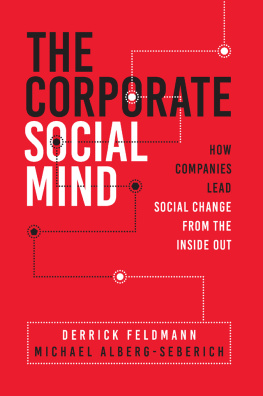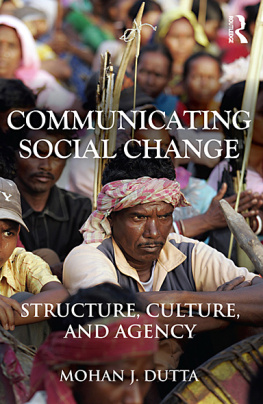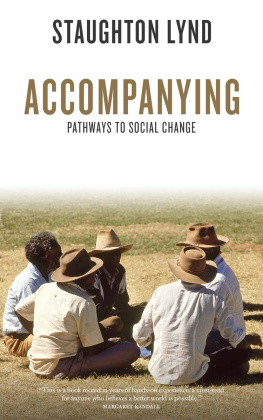Copyright 2016 by SAGE Publications, Inc.
All rights reserved. No part of this book may be reproduced or utilized in any form or by any means, electronic or mechanical, including photocopying, recording, or by any information storage and retrieval system, without permission in writing from the publisher.
FOR INFORMATION:
SAGE Publications, Inc.
2455 Teller Road
Thousand Oaks, California 91320
E-mail: order@sagepub.com
SAGE Publications Ltd.
1 Olivers Yard
55 City Road
London, EC1Y 1SP
United Kingdom
SAGE Publications India Pvt. Ltd.
B 1/I 1 Mohan Cooperative Industrial Area
Mathura Road, New Delhi 110 044
India
SAGE Publications Asia-Pacific Pte. Ltd.
3 Church Street
#10-04 Samsung Hub
Singapore 049483
Acquisitions Editor: Jeff Lasser
Editorial Assistant: Alexandra Croell
eLearning Editor: Gabrielle Piccininni
Production Editor: Kelly DeRosa
Copy Editor: Lynn Weber
Typesetter: Hurix Systems Pvt. Ltd.
Proofreader: Carole Quandt
Cover Designer: Michael Dubowe
Marketing Manager: Johanna Swenson
Printed in the United States of America
Library of Congress Cataloging-in-Publication Data
Massey, Garth.
Ways of social change : making sense of modern times / Garth Massey, University of Wyoming. Second Edition.
pages cm
Revised editon of the authors Ways of social change, 2012.
Includes bibliographical references and indexes.
ISBN 978-1-5063-0662-9 (pbk. : alk. paper)
1. Social change. 2. Technological innovationsSocial aspects. 3. Social movements. 4. Corporate power. 5. War and society. 6. State, The. I. Title.
HM831.M3927 2016
303.4dc232015012470
This book is printed on acid-free paper.
15 16 17 18 19 10 9 8 7 6 5 4 3 2 1
Preface
The world has moved quickly and in unforeseen directions since the first edition of Ways of Social Change was published. A few years ago democracy seemed to be just around the corner in the Middle East, a region long dominated by authoritarian elites. What ensued were civil wars, counterrevolutions, state suppression of opposing voices, and conflicted steps toward more democratic societies. Three years ago Steve Jobs was living; the Great Recession was shrinking millions of peoples opportunities and life savings; ISIS referred to an ancient Egyptian goddess, not a radical jihadist army; Sudan was one country, Myanmar was ruled by a military clique, and Thailand was not; Cuba was embargoed by the U.S.; e-cigarettes, bitcoins, fitness bands, biometric fabric, and Google glasses were little more than curiosities; young people got their news from Jon Stewart; and U.S. credit card debt was greater than student loan debt. Much has changed.
Ways of Social Change, like most college texts, took its inspiration from my having taught social change over many years, both as a course and as an integral dimension to other sociological topics. Most books about social changeseveral of which I assigned students to readare about theories of social change. They illustrate one theory and another with examples of real-world events and trends. Most of what the student learns from these books is how academics think and the ideas scholars bring to their inquiries about social change.
Ways of Social Change has a different purpose. Its intention is not only to explain social change but to help students make sense of the changing world around them. Doing this means confronting the world as it is, recognizing how it came to be this way, and understanding the forces that influence so much of what happens in the world today. Two fundamental approacheshistorical and comparative analysisguide this effort. With this understanding, students can choose to become actively involved in social change.
The most original feature of this book is the emphasis on what Robert Merton referred to as the mechanisms of change, what I call drivers of social change. Students learn about five of thesethe most important forces in the last five centuries and the century currently unfolding: science and technology, social movements, war and revolution, large corporations, and the state. They are the topics of . Each of these also has been resisted as an agent ofand enlisted to resistsocial change. This, too, is discussed in each of the five chapters.
Ways of Social Change uses a fictional device to acquaint students with social change as a lived experience. Iris Summers, introduced in , came of age in a period of rapid and profound change. The society in which she lived was structured and moved by organizations and powerful forces, some well beyond her recognition, let alone her control. But that is not all of her story. She is the thread that runs through the book, reminding students that social change is lived and deeply personal and that human beings not only experience but make social change happen.
Unlike many books students are assigned to read, Ways of Social Change engages in a great deal of nonfictional storytelling. Of course, many pages are devoted to explaining what a social movement is, what the state, the corporate form, technology, and war are. Many other pages tell the story of a massive dam project on the Colorado River; the transformation of China from communism to authoritarian capitalism; the ways World War II transformed how nations deal with their citizens; how top-down expertise looses out to local knowledge and a moral economy in the Third World; the slow but universal adoption of the bicycle; the chipping away of racial injustice through the courts; the adoption of sanitation in cities and hospitals; the steps and struggles toward equality for women; and more. Rather than tell students that these things happened, I have tried to explain how and why things changed.
The events of the recent past, to say nothing of more distant events, have not been obvious outcomes of easily identified processes. Context, historical trajectory, units of analysis (personality, culture, social structure), and critical linkages must be taken into account. And this must be within a conceptual scheme that gives meaning to the facts. Doing thiswithout adding to the confusion of the many partisan and poorly informed voices that purport to tell us what is going onis a challenge Ways of Social Change has sought to meet.
Understanding social change, in the final analysis, is a critical thinking skill for unraveling the forces shaping the twenty-first century. To help students acquire this skill, research and theory are the topics of . Today, there is so much easily available information; handheld computers put any fact a few clicks away. Very little of it, however, is imbedded within a framework of understanding. And little of it is vetted by people who can evaluate its accuracy and weigh its importance. We get the information we want. We hear opinions we agree with. We accept explanations that rarely challenge us and comfortingly reinforce our prejudices and perspective. On some level, students are aware of this, and they want something else. I have tried to provide historical and comparative stories that offer a sometimes disquieting but better way to make sense of things, or at least a more critical mode of thinking.










